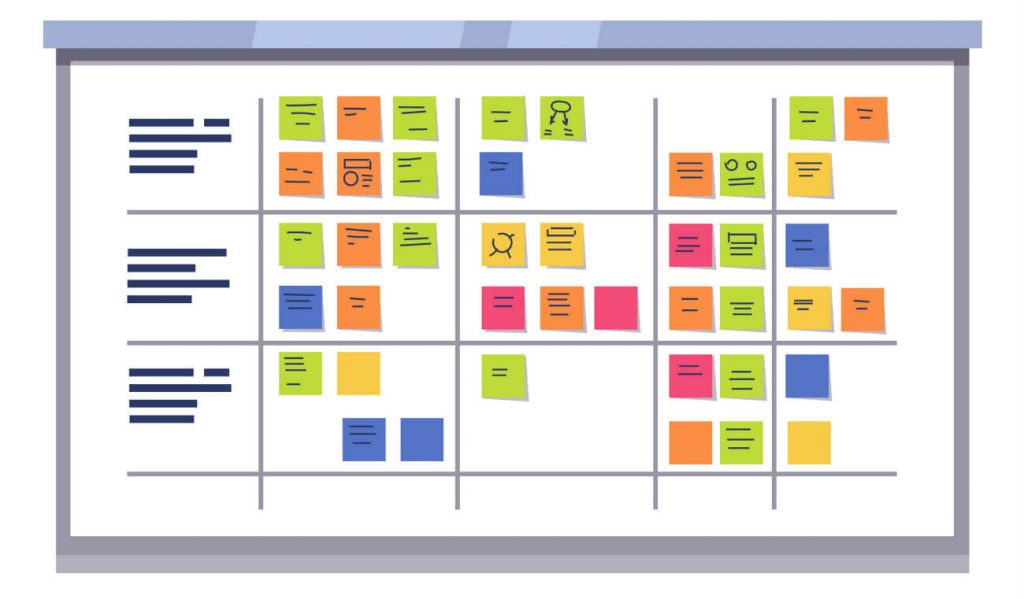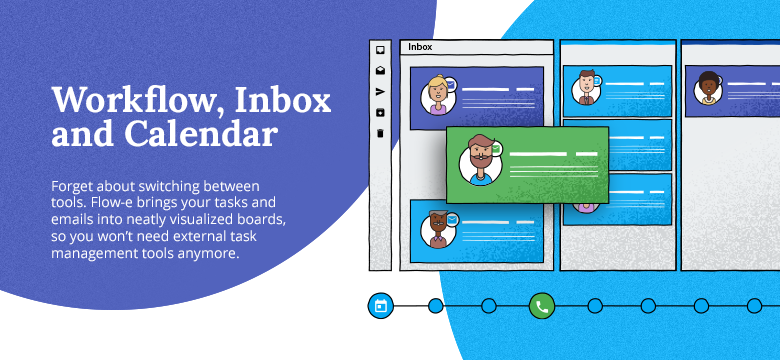As Merlin Mann says: “The two most valuable resources you possess are your time and your attention. They are both finite, and they are both irreplaceable. There’s no way you can add more hours to the day. But the demands on your time and attention are infinite. There is no end to how much people can ask of you.”
Most people in the modern workplace know exactly what he means, and struggle to cope with a seemingly infinite number of tasks and requests every day.
Managing these competing demands for your time and attention requires you to not just be productive, not merely to do the tasks required for your job, but also to be self-managing.
You need a self-generated, self-sustaining system for managing and prioritizing your time and your productivity in the best way.
Every busy person must be both an executive and a laborer for their own tasks and goals.
Defining Task Management
Task management is the method of describing how you recognize, screen, and process the work that you have to do throughout the day.
Normally, we refer to ‘task management’ for tasks that relate to work life, but you can also use various tools to manage your activities at home.
You can’t be well-organized purely by responding to the next email in your inbox.
What comes in next might not be the most important.
Therefore you need to manage your tasks as a group.
In addition, you have to prioritize your time effectively by spending the right amount of time on priority tasks (that also means avoiding social media until your work is complete).
Task management helps you stay ahead and enables your team to hit all their deadlines.
The advantages of task management are
- You can get a snapshot of everything that needs to be done
- You identify what your priorities are
- You are able to identify how much time you have available to complete those tasks
- Similar tasks can be grouped together so you can work on them at the same time
- To avoid overworking yourself, you can balance and delegate tasks and deadlines
Why Use Calendar and Task Manager Apps?
Most people find that, in order to both manage and execute their own workload, they need to adopt specialized systems and tools.

Using calendar and task manager apps allows a person to effectively.
1. Get organized
Being organized reduces stress, increases productivity, and improves morale and motivation.
2. Delegate tasks
Delegation allows you to retain the management role of a task while assigning the execution role to someone else.
It also ensures that deadlines are met.
3. Monitor productivity
A significant percentage of the average workday is spent not directly on work, but on gathering and communicating the current status of tasks.
4. Improve relationships
An organized person shows up on time and is prepared for meetings, meets their deadlines, and communicates realistically about priorities and time frames.
These habits convey competence and effectiveness to staff, clients, coworkers, and leadership, developing trust and respect.
Features of a Good Calendar and Task Manager App
While there are literally hundreds of calendar and task manager apps on the marketplace, these are the key features that really make a difference when managing time and attention:
1. Simple to use
Some apps with useful and powerful features are also, unfortunately, difficult to learn.
If a tool isn’t easy to use and benefit from right away and requires a lot of time in tutorials and support, then most people won’t find it worth their time.
It’s important to be able to implement and gain the benefit of the tool as soon as possible.
2. Fully integrated
While many people don’t mind keeping email, to-do lists, and calendar appointments in separate, specialized apps, and conveying information back and forth between them, ultimately, that’s not a good use of your time.
The best tools combine and automate the flow of information between tools so that there is minimal data entry and repetition, reducing the chances of information being lost, and streamlining reminders and follow-up.

3. Easy to share
Whether delegating tasks or creating calendar appointments, an app has to be easily sharable and understood by the recipient.
Adopting a byzantine system that has to be explained to other users wastes time and reduces the likelihood that others will take the desired action.
4. Ready to customize
Because every tool, every project, every workplace, and every individual is different, the ideal app would be easily customizable.
A good tool should allow the user to sort, organize, prioritize, group, color code, flag, or otherwise customize how they manage their data.
5. Secure and private
Even if your workplace isn’t subject to special data security measures, you still want to know that your data is protected and secure.
Conclusion
Ultimately, each self-manager should adopt the tool that works best for them, their communication style, and their workload.
But strive to keep it simple, so you can focus your limited time and attention not on managing lists and deadlines, but on work that is the most productive and meaningful.
Related Articles:
- Time Management and Procrastination: Let’s Deal with This Now
- This Is Why You Should Be Using Your Email as a Task Manager
- 34 Email Facts
- Personal Organization System for Productivity and Time Management
- How to Choose the Best Personal Productivity Tool for Email Management?
- 5 Email Habits That Are Way Better Than Inbox Zero
- What Is Akrasia and How to Overcome It
- Personal Kanban Boards to Visualize Your Inbox
- GTD Flowchart Explained in Actions
- What is Lean Email?
